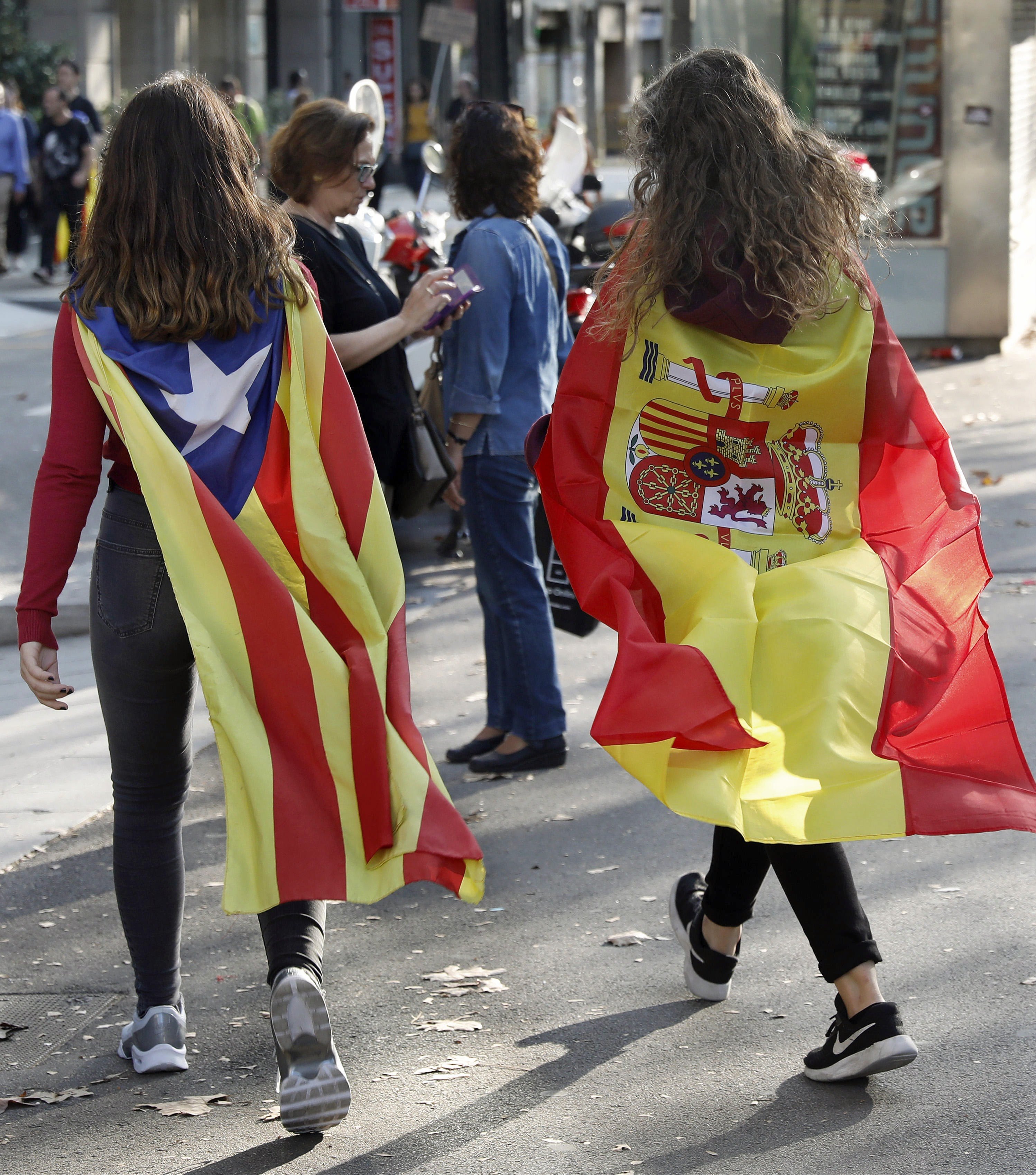As you walk around any Catalan city, you're going to see many, many flags. And not, as you might expect depending which country you're from, just on hotels and public buildings, they're also on private balconies, T-shirts and stickers on cars. But what do they all mean? What are people trying to say by putting them up?
What's the Catalan flag? Why does it sometimes have a star on it?
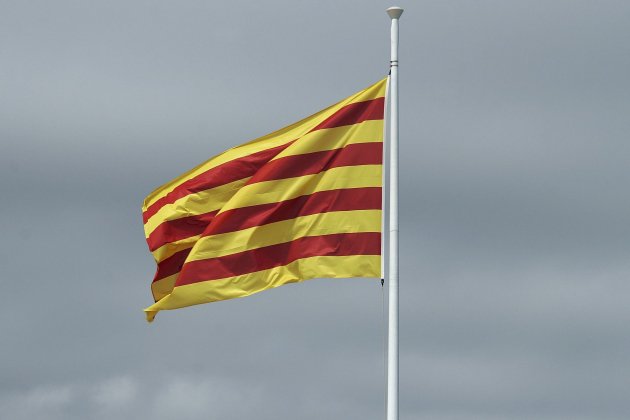
Photo: Pixabay
The senyera, the official flag of Catalonia, based on the arms of the Crown of Aragon, is made up of nine horizontal stripes of equal width, five yellow and four red. The story goes that it was created by Frankish king Charles the Bald for count Wilfred I the Hairy of Barcelona as a sign of gratitude. As the count was dying from wounds sustained in the 897AD siege of Barcelona, the king dipped his fingers in his blood and drew them across the count's golden shield. Sadly, this poetic if icky story is certainly a myth, not least because Charles the Bald had died twenty years before Wilfred.
Besides being the flag of Catalonia in its original incarnation, it also features in various forms on various flags in what used to be the kingdom of Aragon. The autonomous communities of Aragon, the Balearic Islands and Valencia, for example, are all based on it.
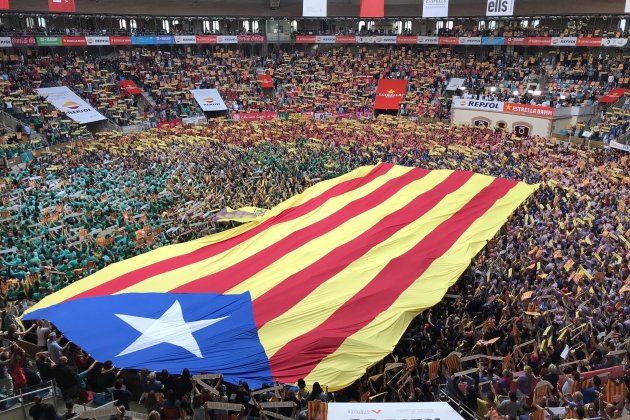
Photo: ANC Tarragona
The version with a blue triangle and white star is called the estelada (literally, "starred"). It was created in the early 20th century, apparently drawing inspiration from the flag of Cuba given their then-recent War of Independence against Spain. It's common to see this version with a yellow triangle and red star instead of the blue and white. This is generally associated with left-wing groups supporting social as well as national revolution. Over the years, various other groups have created their own colour variants.
What about the Spanish flag?
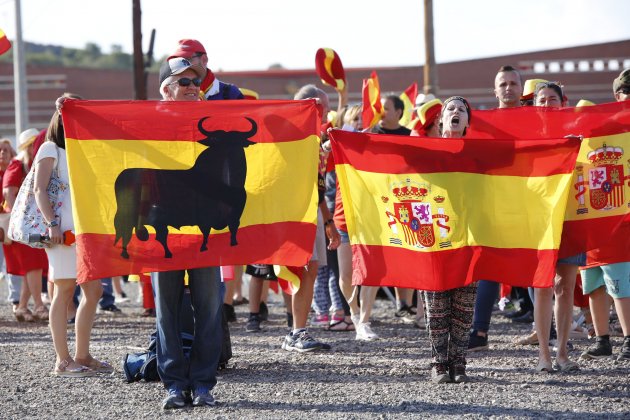
Photo: Sergi Alcàzar
You'll already be familiar with the Spanish flag: horizontal bars running red, yellow, red from top to bottom, with the yellow the widest. Officially, it also includes the country's coat of arms on the side nearest the hoist. Sometimes, you see it with a black eagle instead of the coat of arms: that was the flag of the Franco dictatorship. Again, there's a whole range of other variations you'll see from time to time. One, for example, replaces the coat of arms with a bull.
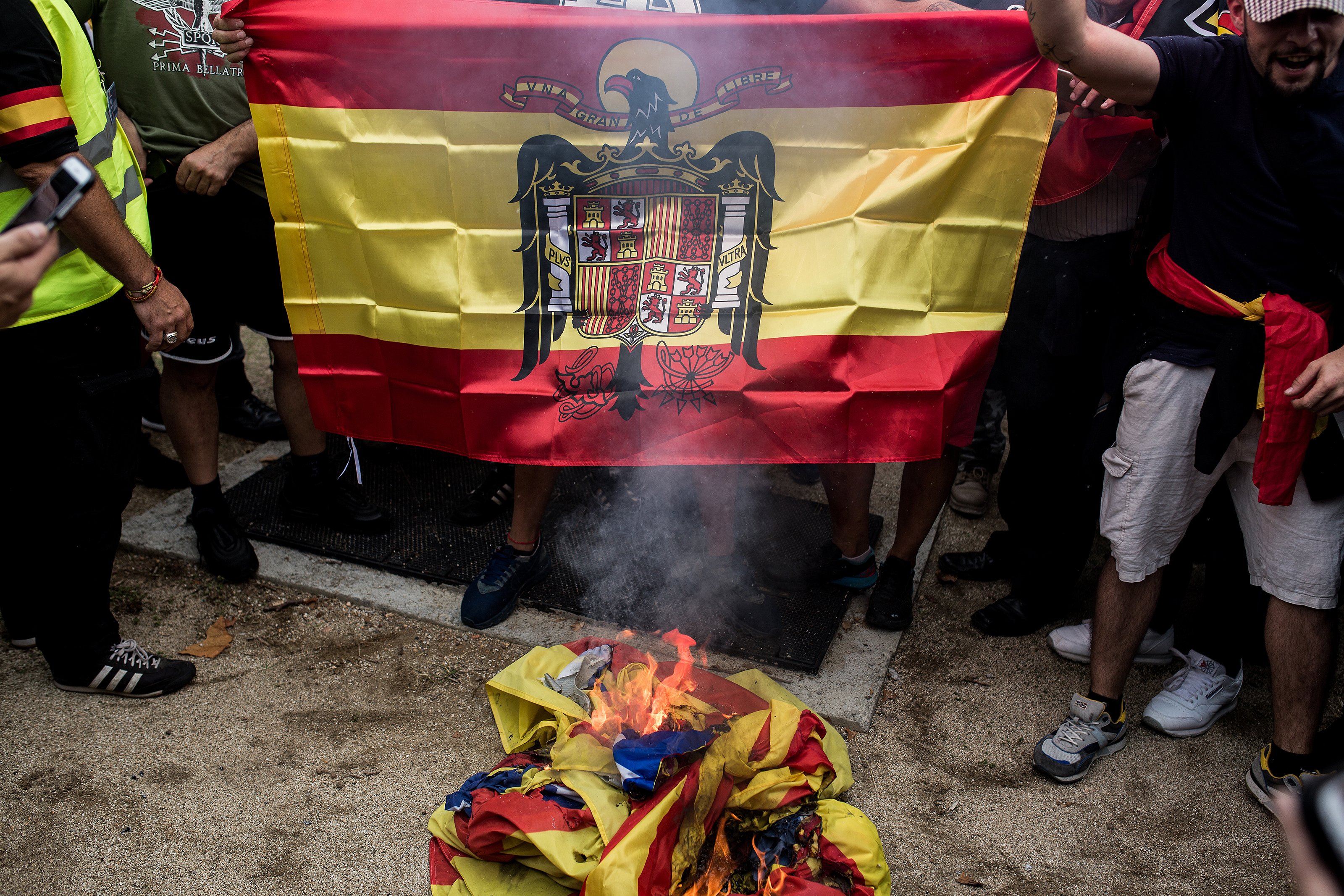
Photo: Carles Palacio
Then there's the flag in the photo below, a tricolour of red, yellow and purple (officially "murrey"). This was the flag of the Second Spanish Republic from 1931 until Franco's coup in 1939, and is used to this day by republicans. As a curiosity, if brought back officially, it would be the only country flag in the world to have purple on it, besides tiny splashes on those of Nicaragua and Dominica.
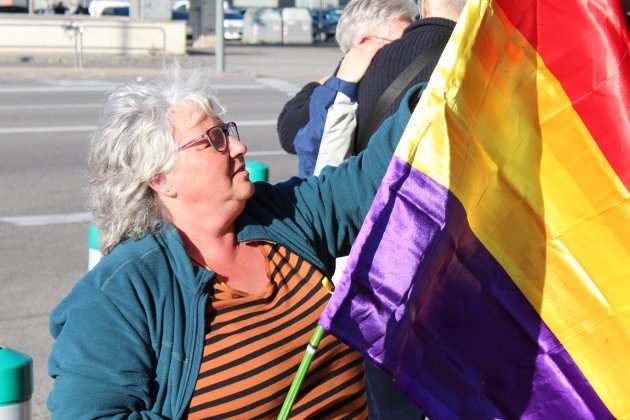
Photo: Júlia Farré
And this black one?
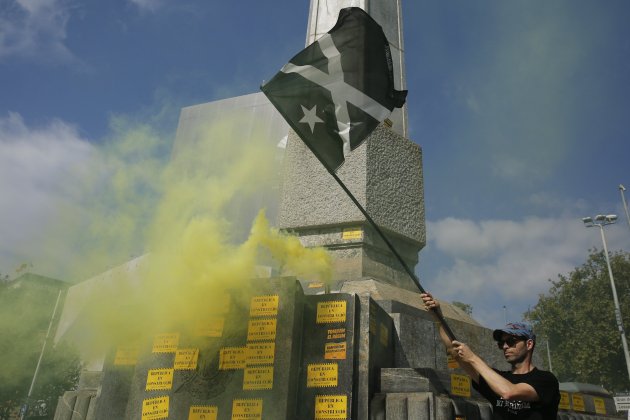
Photo: Sergi Alcàzar
That's the "black flag for the tercentenary of the War of the Spanish Succession". On 11th September 1714, the city of Barcelona fell to Bourbon forces in the War of the Spanish Succession; Catalonia had been on the side of the Habsburg claimant to the throne. The war would be followed in Spain by a period of centralisation and the loss of regional powers and rights. The end of the siege that September is now commemorated annually as Catalonia's national day.
This flag was introduced for the 300th anniversary in 2014, blending the black flag flown during the siege as a sign of determination with the cross and star of Saint Eulalia, the city's patron. It's another flag associated with supporters of Catalan independence.
A flag I've seen isn't on this list
This list is far from complete, so as you travel around Catalonia you'll likely see all manner of other flags. Some you'll recognise: the flag of the European Union for example. Others you won't. Many cities have their own flags: Barcelona's, for instance, is divided into four quadrants with two mini vertical senyeres and two crosses of St George, the patron saint of Catalonia. Even some neighbourhoods have their own, like Barceloneta, top half blue, bottom half yellow with a circular shield design in the centre.
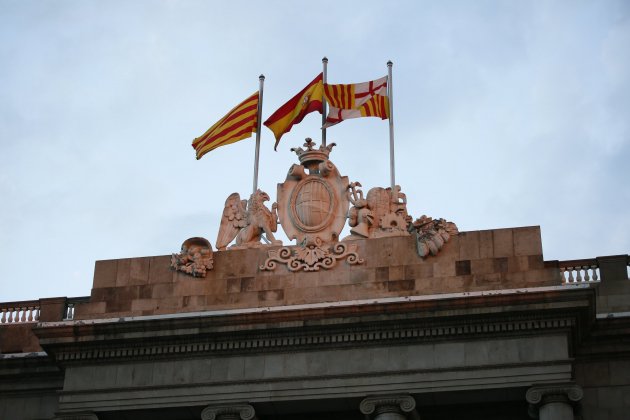
Photo: Sergi Alcàzar

